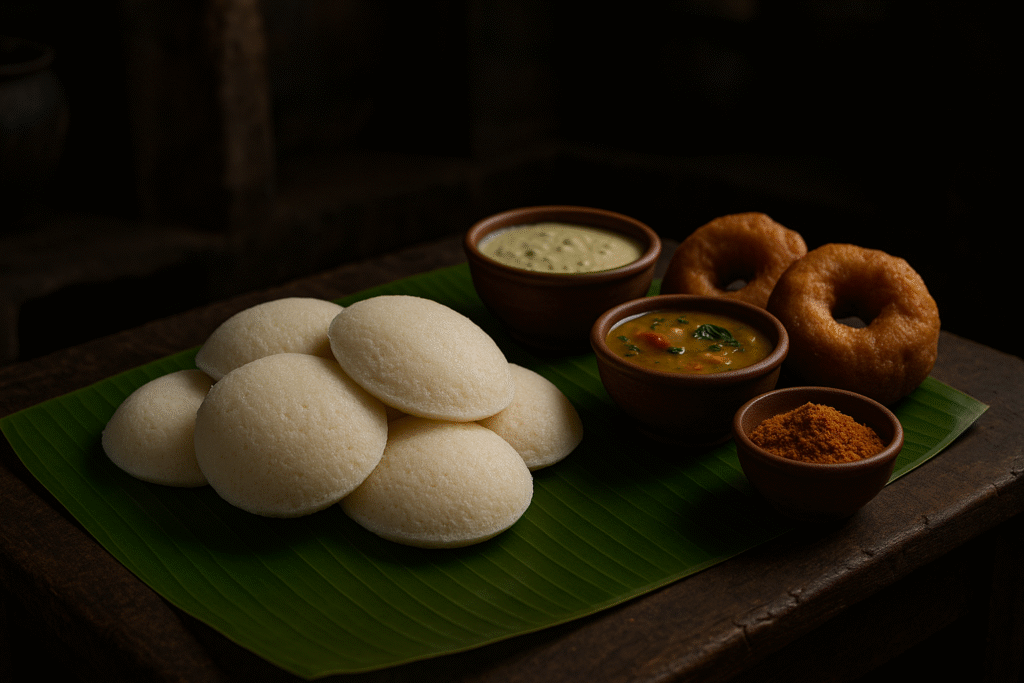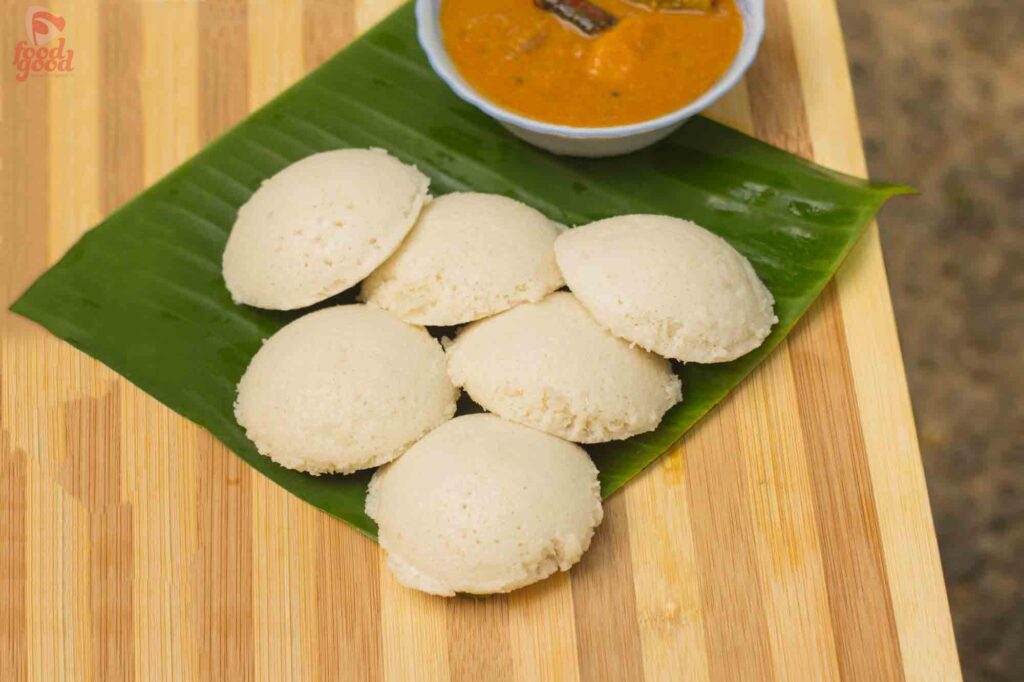What’s Idli?
Idli, the soft, steamed rice cake, is one of South India’s most iconic and beloved dishes. Today, it simply stands as the symbol of a traditional South Indian breakfast.Idli is the brand ambassador of South Indian food! You can find it almost anywhere South Indian cuisine is served.
So, what makes idli so popular?

It’s healthy, easy to make, and gives enough energy and protein to kickstart your morning rush!
In India, you can enjoy so many varieties of idli to suit your taste- from the classic plain idli, to rava idli, millet idli, bread idli, vegetable idli, masala idli, and even stuffed idli!
The history of idli goes all the way back to the 10th century. In the book Manasollasa by King Someshvara III of the Chalukya empire, there’s a recipe called “Iddalige”-a steamed dish made with urad dal and spices. It’s often considered the ancestor of the modern idli.
Today’s idli is made with a simple batter of urad dal, rice, and salt. That’s the basic recipe-not just for idli, but also for dosa!
Kerala Idli
Ingredients
Instructions
-
Soak Ponni rice (Idli rice) and urad dal separately in bowls for at least 3 hours.
-
Drain the water and grind both separately using the required amount of water to make a smooth batter.
-
Combine the ground rice and dal batter, add salt, and mix well.
-
Allow the batter to ferment overnight in a warm place.
-
Once fermented, mix the batter gently before use.
-
Boil water in the idli steamer or pressure cooker (without the weight).
-
Grease the idli plates with a little oil.
-
Pour the batter into each mold and place the stand in the steamer.
-
Steam for 10–15 minutes, or until a toothpick inserted into the idli comes out clean.
-
Your soft, fluffy idlis are ready! Best served with coconut chutney, sambar, or any side dish of your choice.
Note
Note: Use a large bowl to hold the batter, as it will rise during fermentation and needs space.
In hot weather, fermentation happens faster. In colder climates, it may take longer — so place the bowl in a warm spot if needed.


